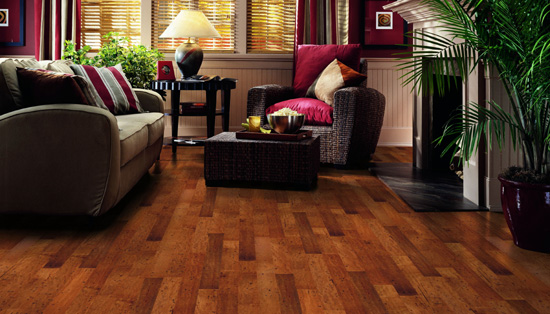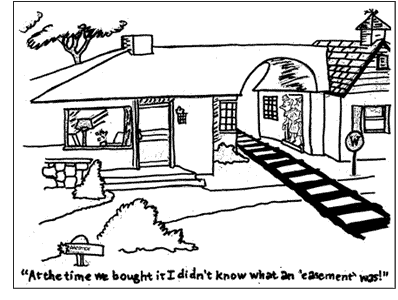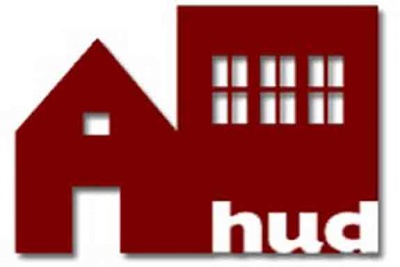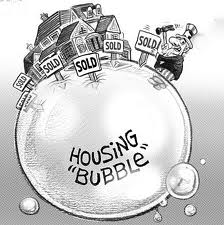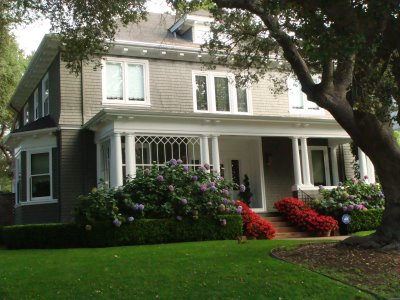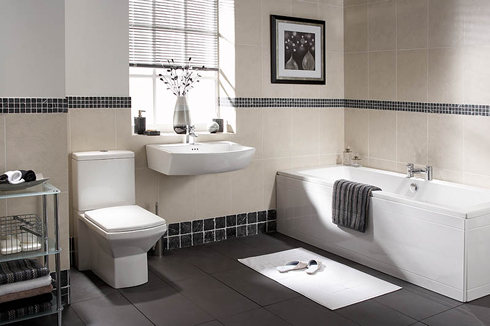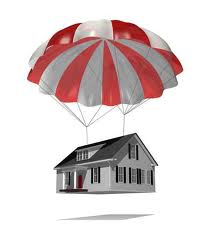
BLOG
Home Improvement Projects That Require The Help Of A Professional
Photo via Pixabay by Tookapic
Home improvement is a multi-million dollar industry, with thousands of Americans tackling projects both big and small every year. Whether you need to repaint your dining room or replace the roof, your home improvement project will require quite a bit of care and thought to ensure it’s a success. Not only that, you’ll need to think about whether it will be a DIY task or one that necessitates the touch of a pro. This is because some projects are dangerous and require special training to complete. Also, if you attempt to make a repair or major change without the right knowledge or tools, you run the risk of making a mistake that could be very costly to fix.
Fortunately, there are many service professionals around the country who are ready to help out. Look online for pros near you, and do a little price comparison to make sure you’ll get the best deal. In some cases, your homeowners insurance may help you pay for the repairs--such as a new roof--but you’ll need to talk to an insurance rep to find out exactly what they will cover.
Here are a few things to think about when it comes to home improvement.
Roofing
There are very few roofing projects that are DIY, mostly because they can be so dangerous and require a lot of special skills. That’s why it’s crucial to make sure you find the right contractor for the job. Do a little research online before making a decision and take the time to read reviews. Roofing scams are, unfortunately, all too common these days, and can take weeks or even months to come to light, as they rely on giving the appearance of having fixed a problem. As soon as bad weather rolls in, the unsuspecting homeowner realizes that the issue was never fixed, and they may be out thousands of dollars to make things right. Once you find a credible roofing company, do some price comparisons to make sure you get the best deal.
Remodeling
Remodeling jobs are often taken on as DIY projects, but it’s important to make sure you get professional help for the big stuff, like redoing a basement. That’s because this part of the home is more than just a storage space or recreational area; it’s also a crucial part of the structure, and major problems can arise if the walls or flooring become compromised. Also, entrances and exits are often regulated by the city for safety reasons, so you’ll need to do some research on that before getting started. Hire a pro who can come in with knowledge of basement rooms and help you make the most of this space safely.
Electrical work
Anytime electrical work is done in a home, there is a risk of danger or even death, so it’s imperative to call in a pro when you need help with wiring, especially if your home is more than ten years old. When you’re dealing with electricity, you need to make sure the job is done right the first time and that any old issues are taken care of, since there’s a chance not just of electrical shock, but also fire and smoke damage.
Toxin removal
Many older homes have paint or insulation that contains toxins such as lead, mold, and asbestos. These are highly dangerous and can cause everything from allergy-like symptoms to kidney problems to death, so it’s crucial to make sure they are removed from your home by a professional who has the right tools for the job. Other types of mold can be found in damp areas of the home, such as in bathrooms and basements, which can typically be cleaned with a mixture of hot water and bleach. However, if the dampness has caused damage to baseboards, walls, or flooring, a pro should fix those areas.
Home improvement projects can become very costly if they aren’t done right the first time, so keep this in mind when shopping for a contractor or other professional. Spending a bit now may help you save thousands of dollars down the road, and you’ll have peace of mind knowing that your home is in good hands.
Painting Your Own Home: Tips to Make the Process Painless

Painting Your Own Home: Tips to Make the Process Painless
While it’s might seem easier to hire professionals to paint the house, but with a little research you can find the job is not as intimidating as it seems. With a few free days set aside and some preparation, painting one room (or multiple) is easily doable for anyone. Here are a few things to consider before you start.
Apply a Primer Coat
Preparation entails most of the painting process. It’s easy to become frustrated during the preparation stage, because prepping to paint can take longer than the actual painting component of the project.
Interior walls aren’t always perfect, and painting the walls is a perfect opportunity to fix those imperfections. If you’re using a putty or a filler to patch holes, the paint will react differently to those substances than it will the wall itself. The solution here is to prime your walls, so the new paint color has a uniform surface to adhere to. It’s one simple step that doesn’t seem like much, but could end up saving you a whole lot of work at the end of the process.
Factor in taping time
Taping up the room is tedious work, but will be worth it when you don’t have to waste time being ultra-careful or nervous when getting close to edges. Instead of trying to take the tape off while the paint is still dry, wait at least 24 hours for the paint to dry, and use a knife to slice the tape off at the edge. If the paint is still even a little wet or gummy, don’t continue. Make sure the knife is sharp enough and pull the tape away at a 45-degree angle, making sure not to rip the paint.
Set up with clean-up in mind
To protect floors, a drop cloth is a necessity. In some cases, cotton or canvas drop clothes can work better than plastic. Plastic drop cloths can be slippery and don’t easily stay in place, especially when ladders are involved. Any splatters or drips of paint that fall onto a plastic drop cloth won’t dry or absorb right away and can be easily tracked throughout the rest of your house. A canvas or cotton drop cloth will be more stable and will protect the floors better. Tape the edges of the drop cloth to the tops of the trim to protect both the floor and the trims from any splattering or dripping paint.
Work top down
Not only does it prevent drips from ruining anything you’ve already painted, but it keeps the walls and baseboards free of any dust or debris from sticking to wet trim. Paint the ceiling first, move to the walls and possible crown moldings. Only then should you move to any trims around windows or doors and finish with the baseboards. Not only will this keep a system in place to ensure there’s no questioning what’s been painted and what hasn’t, but it’ll keep things clean.
Check thickness of previous paint layers
Cracks on an exterior paint job don’t reflect the owner’s best intentions and should be fixed before the damage is too much to fix. Too thick of a layer of paint means that the paint might just be too heavy to stay, and will start to crack and to peel off. It loses its grip and can’t attach to the other layers of paint. In older homes, it’s likely that some of those layers of paint have lead in them, in which case you’ll need to look into how to remove it safely. The EPA has guidelines here. This could be the one step that requires you to outsource, if the layer of paint is extremely thick, because removing it completely (and correctly) will ensure the next coat of paint will attach correctly. Hiring a home washing company can help you identify these cracks in exterior paint as well. If anything, have the exterior of your home professionally power washed, so the paint will have a clean surface to adhere to.
Using these tips, ideally the house-painting process will be doable for anyone. Prepare yourself to set aside time for set-up, knowing that it will help when you’re done painting and ready to clean up. Instead of hiring painting professionals, save some money for decorating and tackle the job yourself.
Curious to know how much your Southern California home is worth! Get an instant report now! www.CaliOnTheMove.com
Bio: Matt Lawler is an Internet marketing specialist from Tempe, Arizona where he attended Arizona State University. Whenever he can step away from the computer, Matt enjoys playing sports, traveling and exploring the great outdoors. Follow him on Twitter.
Laura Key, REALTOR® Cal BRE 01908085 310-866-8422 Laura.A.Key@gmail.com www.KeyCaliforniaHomes.com
Home Underwater and You Feel Trapped?
What if I told you there is a legitimate program that will allow you to short-sale your current home and buy a home the next day? Yeap, I bet that got your interest. Some peoples homes are underwater due to no fault of their own. Yes, my friend....we can help! No crazy fills or frills...a honest to goodness solution for those who need help.
Contact me today for more details.
Laura Key, REALTOR® Laura.A.Key@gmail.com
When It Comes to Wood Floors, Choose Wisely
Rich wood flooring can spell instant warmth and patina in a home. Here’s an overview that can help you evaluate if wood floors are right for you! Laura Key 310.866.8422
Just as with ties and hem lengths, wood flooring styles change. Colors get darker or lighter; planks get narrower or wider; woods with more or less grain show swings in popularity; softer or harder species gain or lose fans; and the wood itself may be older, newer, or even pre-engineered with a top layer or veneer-glued to a substrate to decrease expansion and contraction from moisture.
Here are key categories for consideration:
Solid Plank
This is what some refer to as “real” wood because the wood usually ranges from three-eighths to three-quarters of an inch in total thickness to permit refinishing and sanding. Thicker floors have a thicker wear layer to allow for more frequent refinishing and sanding, so they can withstand decades of use, says architect Julie Hacker of Stuart Cohen and Julie Hacker Architects. It also can be stained, come from different species of tree, and be sold in numerous widths and lengths:
- Width and length: Designer Steven Gurowitz, owner of Interiors by Steven G., is among those who prefers solid flooring for many installations because of its rich, warm look. Like other design professionals, he’s seeing greater interest in boards wider than the once-standard 2 ¾ to 3 ¾ inches — typically 5 to 6 inches now but even beyond 10 inches. And he’s also seeing corresponding interest in longer lengths, depending on the species. Width and length should be in proportion. “The wider a board gets, the longer the planks need to be, too, and in proportion,” says Chris Sy, vice president with Carlisle Wide Plank Floors. These oversized dimensions reflect the same trend toward bigger stone and ceramic slabs. The downside is greater cost.
- Palette: Gurowitz and others are also hearing more requests for darker hues among clients in the northeastern United States, while those in the South and West still gravitate toward lighter colors. But Sprigg Lynn, on the board of the National Wood Flooring Association and with Universal Floors, says the hottest trend is toward a gray or driftwood. Handscraped, antique boards that look aged and have texture, sometimes beveled edges, are also become more popular, even in modern interiors, though they may cost much more.
- Species and price: Depending on the preference of the stain color, Gurowitz favors mostly mahogany, hickory, walnut, oak, and pine boards. Oak may be the industry’s bread and butter because of the ease of staining it and a relatively low price point. A basic 2 ¼-inch red oak might, for instance, run $6.50 a square foot while a 2 ¼-inch red oak that’s rift and quartered might sell for a slightly higher $8.50 a square foot.
- Maintenance: How much care home owners want to invest in their floors should also factor in their decision. Pine is quite soft and will show more wear than a harder wood like mahogany or walnut, but it’s less expensive. In certain regions such as the South, pine comes in a harder version known as heart pine that’s popular, says Georgia-based designer Mary Lafevers of Inscape Design Studio. Home owners should understand the different choices because they affect how often they need to refinish the wood, which could be every four to five years, says Susan Brunstrum of Sweet Peas Design-Inspired Interior. Also, Sy says that solid planks can be installed over radiant heating, but they demand expert installation.
Engineered Wood
Also referred to as prefabricated wood, this genre has become popular because the top layer or veneer is glued to wood beneath to reduce expansion and contraction that happens with solid boards due to climatic effects, says Sy, whose firm sells both types. He recommends engineered, depending on the amount of humidity. If home owners go with a prefabricated floor, he advises a veneer of at least one-quarter inch. “If it’s too thin, you won’t have enough surface to sand,” he says. And he suggests a thick enough substrate for a stable underlayment that won’t move as moisture levels in a home shift.
His company’s offerings include an 11-ply marine-grade birch. The myth that engineered boards only come prestained is untrue. “They can be bought unfinished,” he says. Engineered boards are also a good choice for home owners planning to age in place, since there are fewer gaps between boards for a stable surface, says Aaron D. Murphy, an architect with ADM Architecture Inc. and a certified Aging in Place specialist with the National Association of Home Builders.
Reclaimed Wood
Typically defined as recycled wood — perhaps from an old barn or factory — reclaimed wood has gained fans because of its aged, imperfect patina and sustainability; you’re reusing something rather than cutting down more trees. Though less plentiful and more expensive because of the time required to locate and renew samples, it offers a solid surface underfoot since it’s from old-growth trees, says Lynn. Some companies have come to specialize in rescuing logs that have been underwater for decades, even a century. West Branch Heritage Timber,for instance, removes “forgotten” native pine and spruce from swamps, cuts them to desired widths and lengths, and lays them atop ½-inch birch to combine the best of engineered and reclaimed. “The advantage is that it can be resanded after wear since it’s thicker than most prefabricated floors, can be laid atop radiant mats, and doesn’t include toxins,” Managing Partner Tom Shafer says. A downside is a higher price of about $12 to $17 a square foot.
Porcelain “Wood”
A new competitor that closely resembles wood, Gurowitz says porcelain wood offers advantages: indestructibility, varied colors, “graining” that mimics old wood, wide and long lengths, quickness in installation, and no maintenance. “You can spill red wine on it and nothing happens; if there’s a leak in an apartment above, it won’t be destroyed,” he says. Average prices run an affordable $3.50 to $8 a square foot. The biggest downside? It doesn’t feel like wood since it’s colder to the touch, Lynn says.
Bottom Line
When home owners are making a choice or comparing floors, Sy suggests they ask these questions:
1. Do you want engineered or solid-based floors, depending on your home’s conditions?
2. Do you want a floor with more natural character, or less?
3. What board width do you want?
4. How critical is length to you in reducing the overall number of seams?
5. What color range do you want — light, medium, or dark?
6. Do you want more aggressive graining like oak or a mellower grain like walnut?
7. Do you want flooring prefinished or unfinished?
8. How thick is the wear layer in the floor you’re considering, which will affect your ability to refinish it over time?
9. What type of finish are you going to use? Can it be refinished and, if so, how?
10. For wider planks that provide greater stability: Where is the wood coming from, how is it dried, what is its moisture content, and what type of substrate is used in the engineered platform?
Thinking of selling your home? A little investment can increase your resale value! Call me for a personal consultation! Laura Key 310.866.8422
What To Ask When Looking At Potential Homes
Buying a house can be an intimidating and overwhelming experience. Here are some key questions to ask yourself and sellers before plopping down a down payment. Let me help you with my FREE homebuyer's class! Call me today! Laura Key 310.866.8422
Buying a house can be an intimidating and overwhelming experience. Here are some key questions to ask yourself and sellers before plopping down a down payment.
What To Ask When Looking At Potential Homes
Following is a list of general questions you should always ask when considering making a real estate purchase. Keep in mind, however, you are unique.
You have particular dislikes and likes as well as factors in your life that are different than other people. The point I am trying to make is that you shouldn’t stick to just these questions. You are making an important choice, so give some thought to your situation.
1. Don’t rush into things. The first question to ask should be directed at yourself. What type of home do you want? How big should it be? What amenities do you want? Are you planning for a family in the next three to five years and will the home be able to accommodate a new bundle of joy? Make a definitive list and stick to it. If you stray from it, you could end up with a house that doesn’t really fit you and suffer buyer’s remorse.
2. The next question is what area do you want to live in? Pick a few. You may find the prices to be excessive or the selection not so hot, but make sure you exhaust those areas before moving on. Again, you want to avoid buyer’s remorse.
3. Once you start looking at homes, a key question to ask is how long the house has been on the market. The amount of time will give you an idea of how flexible the owner is on price. If the house has been on the market for a month, the owner isn’t going to be very flexible. If it has been on the market for six months, flexibility will definitely exist.
4. Has the house previously been in escrow, but fell out? If so, find out why? Was it a problem with the buyer getting financing or did the buyer find out there was something wrong with the home?
5. What kind of condition is the house in and how old is it? Remember that a seller has typically done everything reasonably possible to spruce up the home. If you can see wear and tear on the house, it may be a red flag. In such a situation, you need to get a home inspection to make sure there aren’t problems in areas you can’t see such as mold, rust and water leaks.
6. If you have children or are planning on it, you must investigate the school district. Are the schools good? Are there gangs or crime in the area?
7. In addition to the home price, you should ask whether there are any additional fees such association fees.
8. What are the property taxes and what will they be when you buy? Many people are shocked to find out how much they have to kick out in property taxes. Don’t get surprised.
9. Zoning and easement issues are often overlooked when buying a home. If you are buying in a neighborhood with many homes, zoning is undoubtedly going to be for residential living. Easements, however, can be nasty surprises. Find out if there are any easements on the property. An easement gives a third party the right to use of part of the property. This can include giving the neighbor the right to do something or a utility company to place structures on your prospective property.
10. Noise is another big issue to consider. If you are serious about the property, make sure to drive buy on weekdays and weekends. If the property shares a wall with another residence, such as a duplex or condo, make sure you view it while the neighbors are home to get an idea of how loud it is.
11. In the euphoria of buying a property, practical issues can be missed. A big one is traffic. Specifically, what is the commute like between the house and your place of work? You don’t want to buy the house only to find out it takes three hours to get to and from work each day.
Obviously, you should be asking many additional questions before making a purchase. These 11 questions, however, will help you get started. Call me to schedule a time to discuss the homebuying process in more detail. Don’t forget to look into fun things to do in the area to make sure it’s where you want to live!I care about my clients and educating them is a priority! Laura Key 310.866.8422 or email me at Laura.A.Key@gmail.com
Definition of Prescriptive Easement
Call me if you have some questions about a Prescriptive Easement! I have a team that can help you if you have concerns! Laura Key 310.866.8422
A prescriptive easement creates a right to use another's land for a specific purpose. The easement is created by making use of the land without owner permission for a period of time specified by statute. Interference with a prescriptive easement gives the easement holder cause to bring suit.
Easement in General An easement creates a right to use land that is possessed by another for a specific purpose. One parcel of land, the "dominant tenement," enjoys the benefit of the easement, while the "servient tenement" is the land being used for the easement purpose. Once an easement is validly created, even if not used, it is presumed to be perpetual.
Prescriptive Easement A prescriptive easement is acquired when the servient tenement is used for a specific purpose, for some time without the permission of the owner. Through the continuous use and the owner's failure to stop it, the dominant tenement can acquire the right to use the servient tenement property indefinitely. A prescriptive easement is a type of easement appurtenant, meaning that the holder receives physical use or enjoyment of the property. All who may succeed to title of the dominant tenement will be entitled to the prescriptive easement; the easement need not be mentioned in the conveyance or deed in order to be operative.
Elements Speaking generally, for legal elements are usually required: adverse use (use of the servient property without permission of the owner); open and notorious use (with no attempt at concealment); continuous use for the entire statutory period (required statutory periods vary among states, but the minimum is five years); and hostility, meaning that hte easement user knowes he has no right to use the property. However, individual state' easement laws may display variations, and those with easement issues should consult a legal professional.
Exclusive Use Jurisdictions are split on weather a prescriptive easement requires that adverse use of the property be exclusive in order to fulfill the legal element. A minority of jurisdictions will not allow a prescriptive easement if other parties besides the dominant tenement have also been using the servient tenement adversely for the same use. However, most do not require exclusive use, only that the dominant tenement's right to adversely use the easement "does not depend on a like right in others". In other words, the dominant tenement may still get the prescriptive easement even if the owner or others are also using the tenement in a similar manner.
Termination of Easement As an owner may prevent establishment of a prescriptive easement by effectively ending the dominant tenements adverse use; this can be accomplished by bring suit or physically ejecting the easement user from the property. Easements can also be terminated in several ways; the easement holder can release the servient tenement from the easement; the dominant and servient tenement can merge ownership; or the servient tenement can be condemned. The servient tenement may also invalidate the easement by a sort of "reverse prescription," if the servient tenement uses the easement for a long time and the easement holder "sleeps on his rights."
Source: http://www.ehow.com/about_6501555_definition-prescriptive-easement.html
Does HUD Offer Financing On Their Homes?
Buying a HUD Home is not as difficult as you may think! I have helped many people purchase their 1st Home from HUD! Call me today for more details about the process! Laura.A.Key@gmail.com or Visit my website to sign up for FREE HUD Listings! http://www.KeyCaliforniaHomes.com
HUD does not provide direct financing to buyers of HUD Homes. Buyers must obtain financing through either their own cash reserves or a mortgage lender. If you have the necessary available cash or can qualify for a loan (subject to certain restrictions) you may buy a HUD Home. While HUD does not provide direct financing for the purchase of a HUD Home, it may be possible for you to qualify for an FHA-insured mortgage to finance the purchase.
Los Angeles HUD homes, Buying A Hud Home, North Hollywood HUD homes, Westchester HUD Homes, Gardena HUD Homes, Northridge HUD Homes, Santa Clarita HUD Homes, Simi Valley HUD homes, Lemert HUD Homes, Compton HUD Homes, Lynwood HUD Homes, Hawthorne HUD Homes, Inglewood HUD Homes, Baldwin Hills HUD Homes, Playa del rey HUD homes, Marina del Rey HUD Homes, Santa Monica HUD homes, Lakewood HUD homes, Buying A HUD Home, Buying a Los Angeles HUD Home, HUD Trained Agent, HUD NAID agent
Do I Need An Appraisal On A HUD Home?
Buying a HUD Home is not as difficult as you may think! I have helped many people purchase their 1st Home from HUD! Call me today for more details about the process! Laura.A.Key@gmail.com or Visit my website to sign up for FREE HUD Listings! http://www.KeyCaliforniaHomes.com
It is not necessary to have a HUD home independently appraised, HUD offers an appraisal every 6 months. Your Lender may require a more current appraisal than the one provided by HUD. Ask your loan officer or HUD registered agent.
Los Angeles HUD homes, Buying A Hud Home, North Hollywood HUD homes, Westchester HUD Homes, Gardena HUD Homes, Northridge HUD Homes, Santa Clarita HUD Homes, Simi Valley HUD homes, Lemert HUD Homes, Compton HUD Homes, Lynwood HUD Homes, Hawthorne HUD Homes, Inglewood HUD Homes, Baldwin Hills HUD Homes, Playa del rey HUD homes, Marina del Rey HUD Homes, Santa Monica HUD homes, Lakewood HUD homes, Buying A HUD Home, Buying a Los Angeles HUD Home, HUD Trained Agent, HUD NAID agent
How Much Money Will I Have to Put Down on a HUD Home?
Buying a HUD Home is not as difficult as you may think! I have helped many people purchase their 1st Home from HUD! Call me today for more details about the process! Laura.A.Key@gmail.com or Visit my website to sign up for FREE HUD Listings! http://www.KeyCaliforniaHomes.com
If the bid price is less than $50,000, you’re required to make an earnest money deposit of $500. HUD homes priced greater than $50,000 require a $1000 deposit.
Los Angeles HUD homes, Buying A Hud Home, North Hollywood HUD homes, Westchester HUD Homes, Gardena HUD Homes, Northridge HUD Homes, Santa Clarita HUD Homes, Simi Valley HUD homes, Lemert HUD Homes, Compton HUD Homes, Lynwood HUD Homes, Hawthorne HUD Homes, Inglewood HUD Homes, Baldwin Hills HUD Homes, Playa del rey HUD homes, Marina del Rey HUD Homes, Santa Monica HUD homes, Lakewood HUD homes, Buying A HUD Home, Buying a Los Angeles HUD Home, HUD Trained Agent, HUD NAID agent
Housing Shortage Will Dampen Spring Market
Buyers must be prepared more than ever! Do you have your PRE-APPROVAL in hand? It could mean the different of you getting your new home or renting for another year. Call me, let's discuss your options! Laura Key 310.866.8422
The housing recovery is progressing, but a shortage of homes on the market will limit the number of home sales this spring selling season, industry insiders say.
"If we don't see more people listing their properties, I don't think we will see the home sales volume increase that we are accustomed to seeing," Glenn Kelman, chief executive officer of Redfin told Reuters. "There are far more buyers than there are sellers on the market. We would have a huge boom spurred by low interest rates if there were more inventory on the market."
Still, the National Association of REALTORS® predicts existing-home sales will rise around 7 or 8 percent this spring compared to year ago levels.
In some areas where inventories are particularly constrained—like Washington, D.C., New York, and several California cities—homes are selling within hours of being placed on the market.
"The demand for properties is insane. The bidding wars that are going on, there is not enough inventory and it has become truly a seller's market again," says Neil Garfinkel, real estate attorney at Abrams Garfinkel Margolis Bergson in New York.
Source: “Analysis: Supply crunch to take steam out of home sales,” Reuters (April 3, 2013)
Economist Quashes Housing Bubble Rumors
I love what I do; however I have reservations about this report. I have had deep conversations with other agents and I firmly feel we are in a danger zone. Your thoughts? Laura Key 310.866.8422
Recently, rumblings of another housing bubble have been emerging, but one economist says with inventories expected to rise soon, the housing market is not at threat.
Rick Sharga, executive vice president with Carrington Mortgage Holdings, told a crowd at the REOMAC 2013 Summit & Expo in Dallas on Monday that the housing market should expect things to get worse before they start improving.
But “this is not the 2005 market,” he said. “We are not creating a bubble.”
Sharga says the lack of available home inventory is the reason why home prices are rising. New-home inventories are at their lowest level in more than 30 years, he said. “Very few markets are anywhere near where we were at the peak,” he said. The markets showing some “bubble-like tendencies” are housing markets that saw the biggest declines, he noted.
LPS Applied Analytics recently predicted that home prices could rise another 35 percent without affecting affordability.
Sharga predicts that by this time next year there will be too many homes for sale. Housing and foreclosure starts are expected to start rising within the next year.
Source: “Carrington’s Sharga: We Are Not Creating Another Housing Bubble,” HousingWire (April 8, 2013)
When Can I Bid on a HUD Home?
Buying a HUD Home is not as difficult as you may think! I have helped many people purchase their 1st Home from HUD! Call me today for more details about the process! Laura.A.Key@gmail.com or Visit my website to sign up for FREE HUD Listings! http://www.KeyCaliforniaHomes.com
Owner occupants can offer a bid on a HUD home during the first nine days. HUD will look at all bids on the 10th day and decide based on which offer gives them the highest net profit. If there are two or more bids at the same net to HUD the offers will go into a lottery and the bid will be awarded based on chance. After the 10th day if there aren’t any acceptable bids there will be an additional 20 days of bidding where bids are opened and reviewed daily for owner
Los Angeles HUD homes, Buying A Hud Home, North Hollywood HUD homes, Westchester HUD Homes, Gardena HUD Homes, Northridge HUD Homes, Santa Clarita HUD Homes, Simi Valley HUD homes, Lemert HUD Homes, Compton HUD Homes, Lynwood HUD Homes, Hawthorne HUD Homes, Inglewood HUD Homes, Baldwin Hills HUD Homes, Playa del rey HUD homes, Marina del Rey HUD Homes, Santa Monica HUD homes
Who Can Buy A HUD Home?
Buying a HUD Home is not as difficult as you may think! I have helped many people purchase their 1st Home from HUD! Call me today for more details about the process! Laura.A.Key@gmail.com or Visit my website to sign up for FREE HUD Listings!http://www.KeyCaliforniaHomes.com
Almost anyone! If you have the cash or can qualify for a loan (subject to certain restrictions) you may buy a HUD Home. HUD Homes are initially offered to owner-occupant purchasers (people who are buying the home as their primary residence). Following the priority period for owner occupants, unsold properties are available to all buyers, including investors.
Los Angeles HUD homes, Buying A Hud Home, North Hollywood HUD homes, Westchester HUD Homes, Gardena HUD Homes, Northridge HUD Homes, Santa Clarita HUD Homes, Simi Valley HUD homes, Lemert HUD Homes, Compton HUD Homes, Lynwood HUD Homes, Hawthorne HUD Homes, Inglewood HUD Homes, Baldwin Hills HUD Homes, Playa del rey HUD homes, Marina del Rey HUD Homes, Santa Monica HUD homes
Study: Buyers Can Afford Bigger House If It's New
Good News on the Home Front! Ready to Buy! Let's do this together! Laura Key 310.866.8422
The National Association of Home Builders says its new study shows that home buyers can buy a more expensive, newer house and still have the same operating costs as owning an older existing home.
NAHB examined data from the Census Bureau and Department of Housing and Urban Development’s 2011 American Housing Survey to determine how utility, maintenance, property tax, and insurance costs vary depending on the age of a home.
Houses built prior to 1960 have average maintenance costs of $564 per year. On the other hand, homes built after 2008 have average maintenance costs less than half that — $241, according to the study.
For homes built prior to 1960, operating costs average nearly 5 percent of the home’s value while the average was less than 3 percent for homes built after 2008, the NAHB study found.
The study also took into account the first year after-tax cost of owning a home by its age, examining the purchase price, mortgage payments, annual operating costs, and income tax savings. “A buyer can afford to pay 23 percent more for a new house than for one built prior to 1960 and still maintain the same amount of first-year annual costs,” according to NAHB.
New houses tend to cost more than existing homes, so the mortgage payments will likely be higher — but the lower operating costs of a newer home will give buyers annual costs that could be about equal if they purchase a lower priced, older home with a smaller mortgage payment but higher operating costs, NAHB says.
"Home buyers need to look beyond the initial sales price when considering whether to buy new construction or an existing home," says NAHB Chairman Rick Judson. "They will find that with the higher costs of operating an older home, they can often afford to spend more to buy a new home and still have annual operating costs that fit their budget."
Source: National Association of Home Builders
5 Things You Forgot to Clean in Your Bathroom
Your bathroom, one of the rooms you clean most, hides areas that rarely see a scrub brush. It’s time to tackle these 5 nasty spots you probably forgot.
But we presume you or someone else regularly swishes out the toilets, wipes out the tubs and sinks, and mops your bathroom flooring.
But you may be missing some critical areas. With the help of Kristi Mailloux, president ofMolly Maid, we’ve compiled a list of 5 bathroom spots home owners often forget to clean:
1. Showerheads: A warm white vinegar bath will get rid of mineral deposits, making yourlow-flow shower head flow even lower. Let the showerhead soak for about 20 minutes, then poke a paperclip into shower head holes still clogged. Scrub with an old toothbrush, then rinse and repeat if necessary.
2. Toilet bases: Mildew can grow on the caulking around the base of your toilet. Spray with white vinegar or disinfecting household cleaner, then scrub with a hard-bristled brush. Dry thoroughly.
3. Shower curtains: Clean soap scum and mildew from plastic shower curtains by tossing them into your washer on the gentle and cold (never hot!) water cycle, with detergent and ½ cup vinegar. If mildew is present, add ½ cup of bleach instead of vinegar. Toss a couple of large towels into the machine to act as scrubbers. Hang curtains back on your shower curtain rod, spread them out, and let them drip-dry. If you turn on the bathroom fan, they’ll dry faster.
4. Drains: We don’t usually pay much attention to drains until they’re clogged. But all year your hair, toothpaste, shampoo, and conditioner are building up in sink and tub drains. Remove the stopper — unscrew the shower drain — and clear away obvious gunk, like hair and soap. Soak the drain in vinegar to clear away mineral deposits. Then, pour boiling water, or a mixture of ½ cup white vinegar and ½ cup baking soda, down the drain, which will bubble away crud sticking to pipes.
5. Medicine cabinet: Throw out prescription and over-the-counter drugs you no longer need or want. But don’t dump them down the drain, where they become part of the watershed, or into the trash, where anyone can fetch them out. Instead, take them to a local collection site, often at police or fire stations. Or check U.S. Drug Enforcement Administration’s National Take Back Initiative’s website for dates and sites for their next collection.
Bonus tip: Just for the fun of it, launder those powder room towels you won’t let anyone use. And be sure to clean out your dryer’s lint filter when you’re finished.
Source: houselogic.com written by Lisa Kaplan Gordon Published March 30, 2012
Selling your home is a big decision! Make sure you have someone who can help you get the most value out of your home! Call me today at 310.866.8422 Laura Key
8 Dirty Secrets in Your Home
Steel yourself: We help you expose — and purge — your home’s dirtiest little secrets.
Deep breath ...
1. Cruddy undersides of rugs 2. Disgusting disposal 3. Greasy kitchen vent hood 4. Crumby kitchen crevices 5. Grimy fans and ceilings 6. Grungy toilets 7. Debris-filled crawlspace 8. Linty dryer vents
1. Cruddy undersides of rugs
Look under your area rugs for a nasty surprise -- a sea of grit and dust -- despite regular vacuuming. What to do:
- Move furniture, fold over the rug, and vacuum dirt and dust from its underside. Sweep and mop the floor, too.
- While you’re under the hood, check the rug’s condition. If there’s no staining or discoloration, a good floor cleaning and vacuuming of the rug’s underside is enough.
- If pets, kids, or wine have left their mark, invest in a professional cleaning. A pro will run between $1.50 and $3 per square foot of rug, depending on the type of rug. Delicate natural fibers are usually more costly to clean than synthetics.
2. Disgusting disposal
Your kitchen has more germs than even your bathroom. And your garbage disposal and its splash guard flaps just might be the most disgusting place in the house — slimy, smelly, and befouled with old food. What to do:
- Scrub the underside of the rubber flaps with an old toothbrush and warm, soapy water.
- Pour a 1:1 ratio of white distilled white vinegar and baking soda down the drain. Let it sit overnight and flush with boiling water to sanitize.
- Toss frozen cubes of white vinegar (just freeze it in an ice tray) down the disposal while it’s running. This will sharpen and sanitize the disposal’s grinding blades.
- Freshen up the drain with slices of lemon or other citrus fruit. Peels are OK, but if you have fruit to spare, the citrus acids will help disinfect and freshen.
3. Greasy kitchen vent hood
Your range vent hood works hard to absorb smoke, steam, and grease. Just like you change air filters to extend the life of your HVAC, you should clean the vent filter. Not only will this make the vent more efficient, it’s a safety measure. Should you have a grease fire, a greasy hood and filter can spread the fire into your home’s duct work. What to do:
- Remove the hood filter according to directions for your vent hood model. If you don’t have the paper manual anymore, search online for a copy.
- Soak the filter in a kitchen-grade degreaser.
- Once most of the grease has dissolved, rinse the filter with soapy water.
- While you’re soaking the filter, clean the greasy interior of your vent hood.
- Use a kitchen-grade degreaser for the hood like the one you’re soaking the filter in.
- Wipe the hood's interior with a sponge or rag.
4. Crumby kitchen crevices
No matter how spotless your kitchen surfaces are, crumbs, morsels, and drips of stuff have fallen into the crannies between appliances and countertops, tempting bugs and vermin.What to do:
- For appliances with a bit of ground clearance, like a refrigerator, use the vacuum crevice attachment to suck out the yuck.
- For appliances with less room to maneuver, attach microfiber cloths to a yardstick with rubber bands. Slide and grab under and between appliances.
- Sneak an old-school feather duster between counter cracks or under appliances. Get one with an extra-long handle ($15-$25) or use a flexible duster specifically designed to slide under appliances.
5. Grimy fans and ceilings
Dispatching the out-of-sight, out-of-mind dust (sloughed-off skin cells, dust mites, and outdoor allergans) that lives on ceiling fans and light fixtures means better indoor air quality and fewer allergy problems. What to do:
- Dampen the inside of a pillowcase and slide it over each ceiling fan blade. As you slide it off, run your hands along the sides of the blade to wipe up dirt and dust so the dreck doesn’t rain down on you. Get a spotter if you’re balancing on a ladder or chair.
- For less-dusty ceiling fans, use a microfiber duster that'll grab the blades. ($7-$20)
- For oily or grimy buildup on ceilings, especially in the kitchen or bathroom, run a flat mop tool with a microfiber or soap-cloth attachment along the ceiling. Dish soap will do nicely.
- Remove light shades or covers from ceiling fixtures to wipe out dust and bugs. But turn the light off first.
6. Grungy toilets
You’re not getting down-and-dirty with your toilet until you scrub where the commode meets the bathroom floor. What to do:
- Check that the caulk at the base of the toilet is sealing the area. If it's worn, remove the remaining caulk with a utility knife. Then re-seal it. For extra germ-fighting, choose a caulk with Microban.
- Slide a feather duster behind the tank to brush off any dirt or dust, and use a sponge or damp microfiber cloth to scrub all the way around the porcelain base.
7. Debris-filled crawlspace
No one wants to crawl around under the house — except bugs and rodents. If you suspect critters are playing house, skip the DIY and consult a pro. Otherwise, it’s a good idea to check your crawlspace annually to check for water penetration and clean out debris. What to do:
- Wear personal protective equipment, such as coveralls, a dust-mask, goggles, and gloves.
- If you see mold, don’t disturb it. Call a professional mold remediation company.
- If you don’t see mold, check your vapor barrier for holes, deterioration, or uncovered areas. If you’re handy and comfortable with working in cramped crawlspace conditions, you can fix it yourself with supplies from your local hardware or home store. Otherwise, call a handyman. If the problem seems more extensive (major holes or large uncovered areas), call a foundation specialist.
- Make sure there’s no standing water on top of the vapor barrier. That could mean water is coming from leaking pipes or gutters. It’s a recipe for mold and rot. Call a pro who specializes in foundation or crawlspace work pronto.
- Push out trash through the nearest vent or access door. When you go outside to collect the debris, secure vents and doors so nothing else will blow, crawl, or slither in.
8. Linty dryer vents
This is one of the most important dirty jobs, because cleaning your clothes dryer’s lint trap and vents will extend its life, improve its efficiency, and save your life. Clothes dryers cause more than 15,000 structural fires, injuring 400 and killing 15 people on average each year. "Failure to clean" is the leading contributing factor to these fires.
What to do:
- Use a dryer vent cleaner (about $15), a long, flexible, thick metal cord that snakes through the dryer vent’s dark corridors, to sweep out lint and dust.
- Use your vacuum’s crevice tool to suck out hangers on in the lint trap.
- Vacuum underneath and around the back of the dryer to clear out any remaining lint colonies.
The real estate market has changed? What does this mean to you as a buyer or seller? Call me today with your questions! Laura Key 310.866.8422
1.7 Million Home Owners Regain Equity in 2012
Remember when you asked me if the market has hit bottom yet? Yes Sir - Yes Ma'am we have and now it's bouncing back up! Hurry and get your property before it's too late! Laura Key 310.866.8422
Rising home prices have helped more home owners make their way above water again, with 1.7 million residential properties regaining equity in 2012, according to the latest figures from CoreLogic. The number of mortgaged home owners with equity now stands at 38.1 million.
More home owners are expected to soon join them: About 1.8 million homes will regain equity if home prices rise by another 5 percent—which most economists have forecast for this year.
“In the fourth quarter we again saw an improvement in the equity position of households,” says Mark Fleming, chief economist for CoreLogic. “Housing market improvements, particularly in the hardest hit states, are the catalyst for households to regain equity and become participants in 2013’s housing market.”
While the numbers are improving, many home owners are still underwater: About 21.5 percent—or 10.4 million—of all residential properties with a mortgage still retained negative equity at the end of the fourth quarter of 2012. That number is down 22 percent, year-over-year.
Nevada has the highest percentage of homes with negative equity (at 52.4%), followed by Florida (40.2%), Arizona (34.9%), Georgia (33.8%), and Michigan (31.9%). These five states alone account for 32.7 percent of the total amount of negative home equity in the U.S., according to CoreLogic.
Some additional findings from CoreLogic’s latest report:
- The majority of homes that have equity tend to be on the higher end of the real estate market. Eighty-six percent of homes valued at more than $200,000 have equity, compared to 72 percent of home less than $200,000.
- About 3.9 million home owners with negative equity have both first and second liens. Their average mortgage balance is $296,000 and their average underwater amount is $80,000.
Source: CoreLogic





